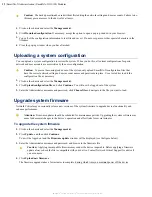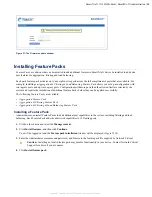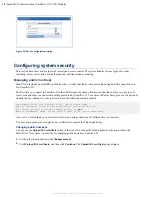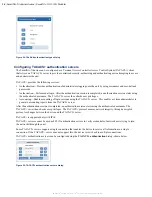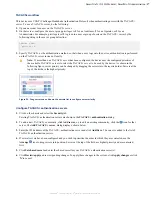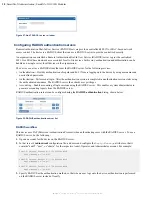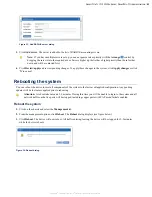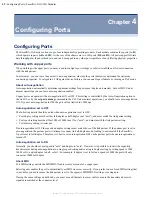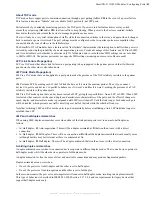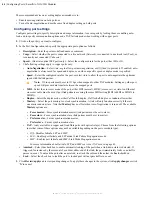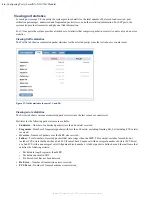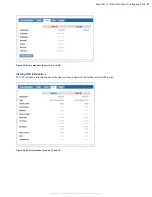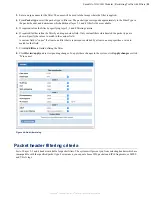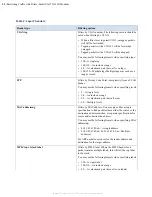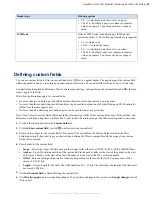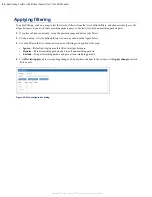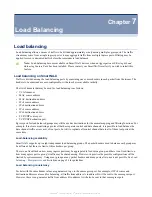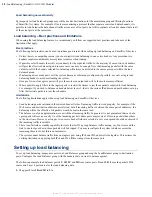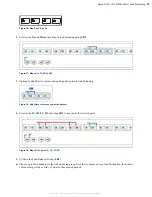
44
| Configuring Ports | SmartNA-X 1G/10G Modular
SmartNA-X
™
1G/10G User Guide 1.4
©
2015 Network Critical Solutions Limited
The recommended advice on avoiding duplex mismatches is to:
• Enable auto-negotiation on
both
ports, or
• Turn off auto-negotiation and use the same fixed duplex setting on both ports.
Configuring port settings
Configure port settings to specify description and usage information, to secure ports by locking them or enabling auto-
lock, and to specify communication options and a TAP failsafe mode when working with copper ports.
1.
Click on the port(s) you want to configure.
2.
In the Port Configuration tab, specify the appropriate port options as follows:
•
Description
—Enter the port user-defined name or comment.
•
Usage
—Select whether the port is connected to a live network (
Network
), is connected to a network tool (Tool), or
is currently not connected (
Unknown
)
•
Speed
—(Dual rate optical SFP ports only)—Select the configured rate for the port, either 10G or 1G.
• The following settings apply to copper ports only:
•
Auto-Negotiation
—Select
Auto-neg
to allow port auto-negotiation, or
Off (fixed)
to prevent it. If enabled, auto-
negotiation is
always
used for speed and duplex, even when a specific speed or duplex mode is specified.
•
Speed
—Select the configured rate for the port, or select
Auto
to allow the port to auto-negotiate the optimum
speed with the link partner.
Note:
V-Line ports must be set to 1G bps when mapped to other TAP modules. Setting any other port
speed will prevent data transfer between the mapped ports.
•
MDI
—Select the crossover mode of the port, either
MDI
(normal),
MDI-X
(crossover), or
Auto
. An Ethernet
crossover cable must be used if port link partners are using the same MDI setting (MDI to MDI or MDI-X to
MDI-X).
•
Duplex
—Select the duplex mode, either
Full
for full-duplex,
Half
for half-duplex, or
Auto
to allow either.
•
Mastery
—Select the port mastery for clock synchronization. A link will only function correctly if there is
one master and one slave. Note that
Mastery
has no effect when Auto-Negotiation is turned off. The available
Mastery
options are:
•
Force master
—Force synchronization master (link partner must be set to slave).
•
Force slave
—Force synchronization slave (link partner must be set to master).
•
Prefer master
—Favour synchronization master.
•
Prefer slave
—Favour synchronization slave.
•
TAP
—(only available on copper and fixed fibre ports with optical relays). Choose from the following options
(note that some of these options may not be available depending on the port or module type):
•
Off
—Disables failsafe, LFP and LMP.
•
LFP
—Enables port failsafe and LFP mode (Link Failure Propagation) mode.
•
LMP
—Enables port failsafe and LMP (Link Mode Propagation) mode.
For more information about failsafe, LFP, and LMP see
on page 43.
•
Autolock
—Select the check box to enable automatic locking of the port when a link-down status is detected. If
triggered, for instance by the removal of a cable at either end of the link, the port immediately locks so no traffic
passes in or out. To unlock the port after an autolock, re-attach the cable and then clear the
Lock
checkbox.
•
Lock
—Select the check box to lock the port. A locked port will not pass traffic in or out.
3.
Click
Review/apply
and review pending changes. To apply these changes to the system, click
Apply changes
or click
'
X
' to cancel.



